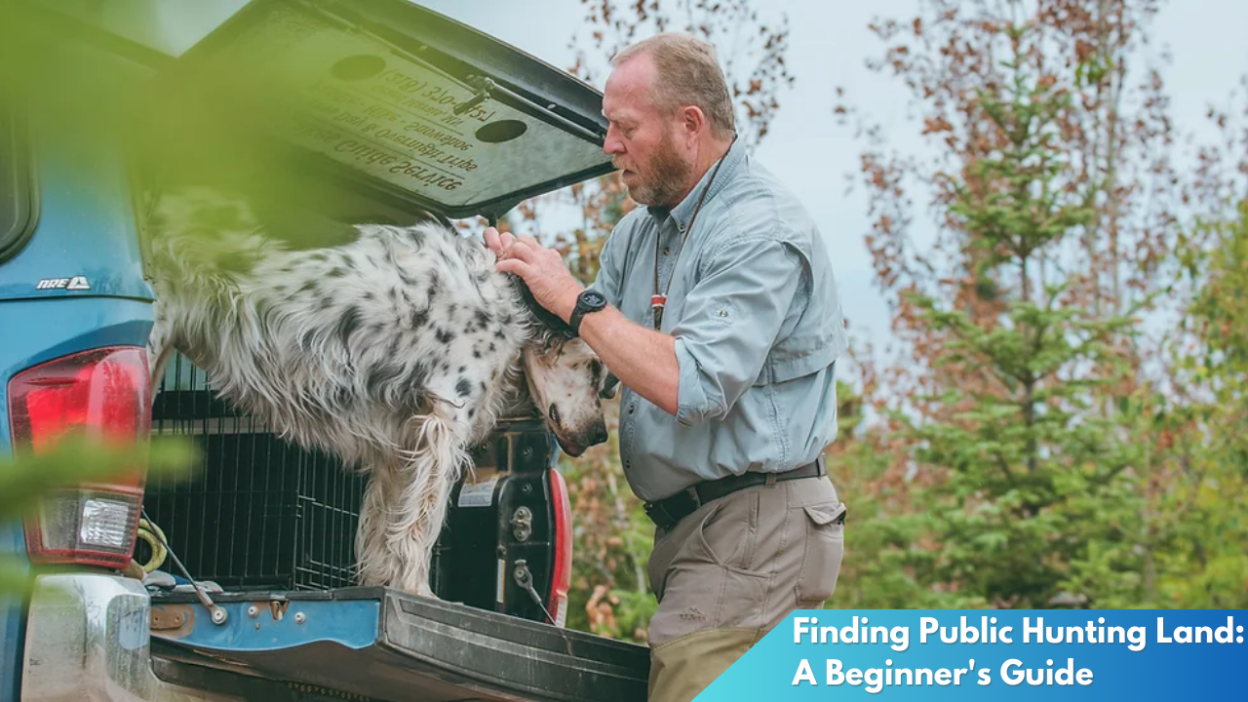Hunting on public land offers an adventurous and accessible way for newcomers to delve into the sport without owning private land. With millions of acres across the United States designated for public use, these lands provide a plethora of opportunities for hunters to explore varied environments and pursue different game. However, for beginners, navigating the complex web of regulations and opportunities can be daunting. This guide aims to simplify the process of finding and hunting on public land, ensuring a successful and enjoyable experience.
Understanding Public Land Access Regulations

Public lands in the United States are managed by different federal, state, and local agencies, each with its own set of rules and regulations governing hunting activities. It’s crucial for hunters to familiarize themselves with these regulations to ensure compliance and avoid accidental infractions. Federal agencies like the Bureau of Land Management (BLM) and the U.S. Forest Service oversee large tracts of land, while state agencies manage wildlife areas and state forests. Understanding which agency governs the land you plan to hunt on is the first step in deciphering applicable regulations.
Each agency may have specific hunting seasons, permitted game, and weapon restrictions, which can vary significantly even within the same state. It’s essential to consult the respective agency’s website or contact their offices directly for the most up-to-date information. Additionally, hunters should acquire the necessary permits and licenses, which often require passing a hunter safety course. This not only ensures legal compliance but also promotes safety and ethical hunting practices.
Moreover, some public lands are designated as “walk-in” areas, which may restrict vehicle access to preserve the environment and reduce human disturbance. Understanding these access limitations and planning accordingly can greatly enhance your hunting experience. Utilizing maps and local resources to identify access points and designated hunting areas will help in navigating these lands effectively.
Tools and Resources for Finding Hunting Land

In the digital age, a wide array of tools and resources are available to aid hunters in locating public hunting lands. Online mapping services such as onX Hunt and BaseMap provide detailed, interactive maps that display land ownership boundaries, access points, and terrain features. These tools can be invaluable for scouting potential hunting locations and planning your expeditions.
Many state and federal agencies also offer digital resources, including downloadable maps and GIS data, which detail the hunting areas within their jurisdiction. Additionally, the U.S. Geological Survey provides topographic maps that can be useful for understanding the landscape and identifying prime hunting spots. These resources empower hunters to explore new areas with confidence and precision.
Networking with local hunting clubs and communities can also be beneficial, offering insights and suggestions based on firsthand experiences. Joining online forums or social media groups focused on hunting can provide access to a wealth of knowledge and tips from seasoned hunters. These connections often reveal hidden gems and strategies for hunting on public land that might not be covered in official resources.
Tips for a Successful Public Land Hunting Experience

To maximize success on public hunting lands, it’s important for hunters to adopt certain strategies and mindsets. First, familiarize yourself with the land by scouting it ahead of your hunt. Visiting the area during the off-season allows you to explore without the pressure of hunting, helping you locate game trails, bedding areas, and feeding sites, which are crucial for planning your hunt.
Patience and adaptability are key when hunting public lands, as you may encounter other hunters or unexpected changes in game movement. Having a flexible plan allows you to adjust your strategy based on real-time conditions. Carrying a map and compass, or having a reliable GPS device, is essential for navigation and safety, especially in unfamiliar or remote areas.
Finally, practice ethical hunting by respecting the land and other hunters. Following “Leave No Trace” principles ensures that public lands remain pristine for future generations. Additionally, maintaining clear communication with fellow hunters about your presence and plans can prevent accidents and foster a sense of community. By approaching public land hunting with respect, preparation, and flexibility, you increase your chances of a rewarding and enjoyable experience.
Hunting on public land presents a unique and fulfilling opportunity to connect with nature and hone your skills as a hunter. While the process may seem complex at first, understanding regulations, leveraging modern tools, and employing strategic techniques can greatly enhance your experience. As more hunters utilize public lands, it is vital to approach each hunt with respect and responsibility to preserve these resources for future generations. With proper preparation and an adventurous spirit, public land hunting can become a cherished tradition.



